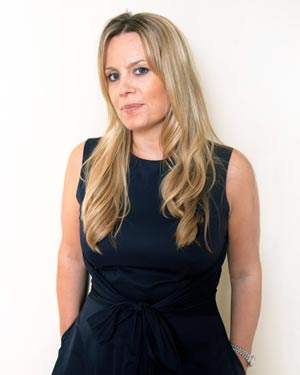By Claire Bridges, founder of Now Go Create and author of In Your Creative Element
Thirty years ago, the internet barely existed. Now technology is everywhere, in the digital tools that we all use on a daily basis in our laptops and phones, and this gives us access to creative inspiration and tools as never before.
There are increasingly vociferous arguments for disconnecting more. We’ve been coined the ‘look down’ generation by historian Simon Schama commenting on our love of our devices and some of the negative aspects of that behaviour.
But we can’t ignore the positive influence of technology on our creative thinking, though the rapid rate of change means that this article is probably already out of date!
Dr Sara Jones, senior lecturer, Creative Interactive System Design at the Cass Business School in London is an expert who keeps up to speed with the latest advances. She says: “Who knows where developments in AI, robotics, internet of things, big data and block chain technology will take us over the next 30 years?”
She considers that the current sweet spot is the interaction between humans and computers and has advice if you’re looking at one of the many tools available to help: “When choosing a tech tool, always consider which parts of your creative process a digital tool or technology could help with, and which you should perhaps still leave to the humans. Computers are great at processing, storing and letting you search through huge amounts of information, but as yet are not so good at empathy, emotion, and being creative without human assistance.”
There are a number of apps and websites all of which are designed to help with creative thinking, explored below.
Jones says: “There are an increasing number of tools are more or less explicitly aimed at supporting creative professionals. Stormboard and Popplet allow you to share ideas online, perhaps after a creative session. Search tools, like Yossarian offer a more creative approach to searching for information online than more conventional alternatives.

Claire Bridges
Tools like Canva, a free graphic/content design programme allows you to quickly and easily pull together slick, brilliantly designed presentations, posters, blog posts and graphics with no design skill required can be really useful.”
We’ve been coined the ‘look down’ generation by historian Simon Schama commenting on our love of our devices
Many of the ‘old school’ aspects of a traditional brainstorm now include technology to improve the process we all know.
Jones explains: “Digital pens, for use on whiteboards, tablets or plain old paper have come a long way in the last few years, but all still require at least some set-up, and few have the familiarity and flexibility of the non-digital equivalent in terms of immediate ease of use.
“Digital post-its now also come in many forms with increasingly sophisticated functionality, with some tools, like Post-it Plus, offering perhaps the best of both worlds, in which you can write down your ideas using old school pen and post-it style paper, but then capture these digitally. This enables you to share ideas with colleagues who missed the session in which they were generated to reorganise them on the fly, and incorporate them into future digital project documentation.”
TECH TOOLS FOR COLLABORATION
Creativity thrives on diversity of thought and there are many tools to allow you to connect with others and collaborate creatively.
Try online mind-mapping tools like Coggle and Mindmeister that allow brainstorming and collaboration with others in real-time. The basic versions of many of these are free and useful for visualising ideas for individuals and teams.
Crowdsourcing is collaboration taken to a whole new level – many companies actively generate ideas and leverage the ‘wisdom of crowds’ in order to solve problems much more rapidly and cheaply.
Creativity thrives on diversity of thought and there are many tools to allow you to connect with others and collaborate creatively
Finding people to share ideas and discuss theories now takes only a matter of minutes, and gaining their approval by way of a like or an emoji in mere seconds.
Slack is a real-time messaging platform that can help collaboration on creative projects and there are also many open innovation platforms that exist for social good and commercial purposes. Examples include Open Ideo.com, Dell Ideastorm and P+G Connect.
This is a simple idea to emulate in your own company and get ideas quickly from many sources without hierarchy or politics interfering – the modern day equivalent of the ideas box!
Technology has revolutionised how quickly businesses can start up and engage with their consumers – from the simplicity of creating a website almost instantly to being able to wireframe an app yourself like Balsamiq.com, to alternatives to traditional funding.
Kickstarter.com has crowd-sourced funds for over 100,000 businesses pledging nearly $3bn to creative projects. It means creative businesses can directly interact with their target audience to sell their ideas and get feedback along the way, which in turn can impact and shape the original ideas themselves.
One of the reasons I wrote In Your Creative Element was to offer a practical toolkit for anyone looking to up the ante in their work. I firmly believe in creative democracy – it’s not the purview of those with ‘creative’ in their job title – and technology offers all of us endless opportunities to up the ante on our creative thinking.
About the blogger
Claire Bridges is chief spark at Now Go Create and author of In Your Creative Element, a new book on creativity published by Kogan Page, with case studies and tips from creative experts and organisations including the United Nations and Twitter as well as some of the world’s most successful advertising and PR agencies.

